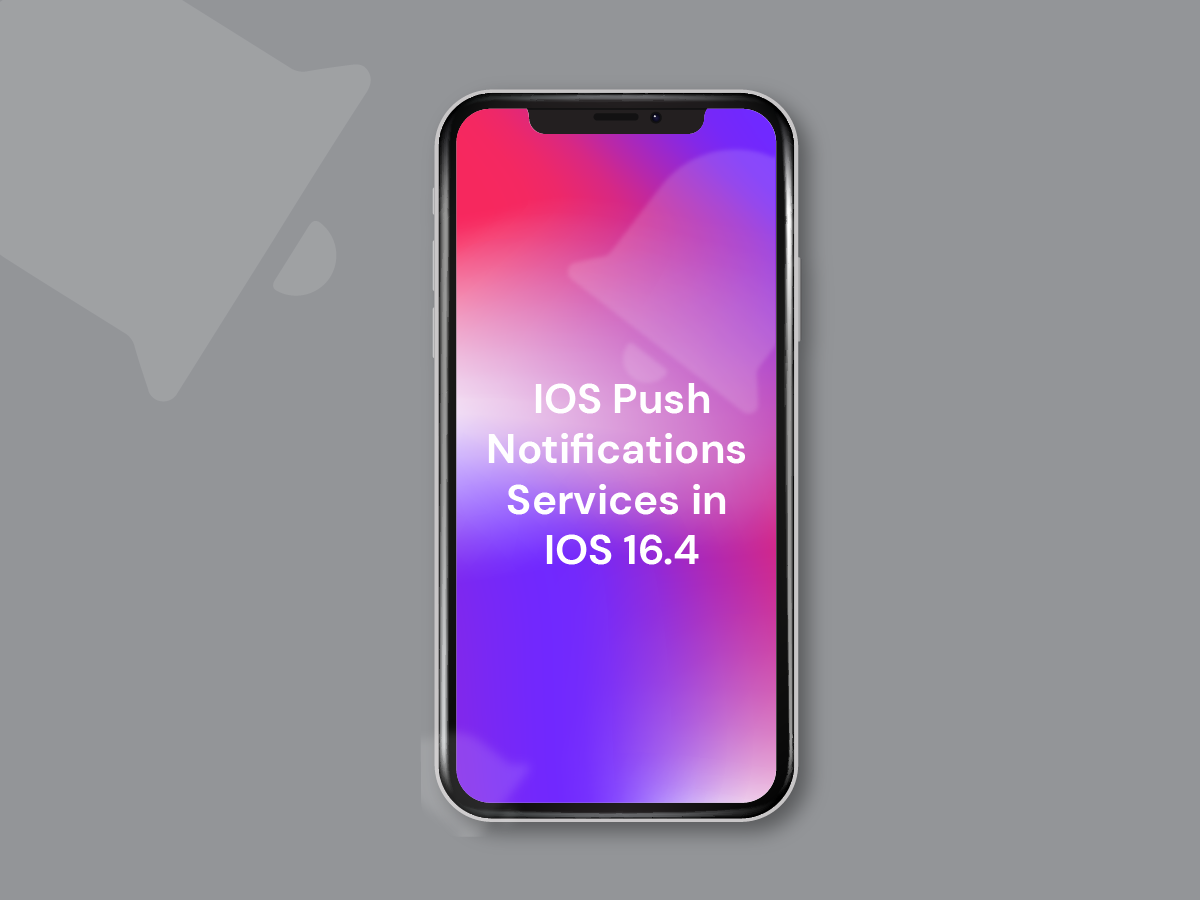IOS Push Notifications Services in IOS 16.4. What’s Crisp?

What’s more exciting than hearing that Apple’s new IOS version 16.4 will let all the web push notification services on your home screens?
Sounds unrealistic? But, it isn’t!
Because IOS hasn’t allowed all the ios notifications to send the promotional message, or advertise something back in the version of IOS 14.
Are Web Push Notification Services Truly Beneficial?
Web applications now have the ability to set notification badge counts, and these notifications also support Focus modes. Moreover, with multiple versions of a web app on your home screen, you can have different settings for each, which proves useful in separating personal and work usage.
We, personally, appreciate the ability to manage push messages on a per-web-app basis as it simplifies the process of keeping them under control.
Apple had initially announced the arrival of web push notifications during WWDC 2022 in June, so these changes have been long-awaited.
However, similar to our approach on desktop, we don’t anticipate enabling Apple push notifications. In fact, we have already disabled most of the notifications for native apps.
Is the Web App a Viable Substitute for Native Apps?
When it comes to mobile applications, it is premature to determine which option is superior. Only with the integration of web apps into the iOS ecosystem and the analysis of relevant statistics will we be able to make an informed judgment.
Currently, native apps appear to be more robust and stable. They offer a distinct user experience compared to web apps. On the other hand, building a web app is generally easier than creating a native app, making it a viable choice for startups to initially develop web versions before considering native implementations.
Additionally, larger companies like Twitter can attract a wider audience by offering both web and native options, catering to different user preferences.
Enhanced Access to Native Device Features:
Improvements in accessing features such as the camera, microphone, and contacts would greatly benefit web apps.
Additionally, providing better access to persistent data, such as user defaults, would enhance the functionality of web apps.
Offline Functionality:
Enabling web apps to function completely offline would elevate them to the same level as native apps in terms of usability and convenience.
Improved IOS Push Notifications:
Push notifications for web apps could be enhanced by introducing features like grouping and prioritization, allowing for more streamlined and customizable notification experiences.
Performance Enhancements:
Investing in performance improvements would make web apps more competitive, ensuring smooth and responsive user experiences.
Focus Support:
Integrating Home Screen web apps with Focus modes would allow users to have fine-grained control over when and where they receive push notifications iPhone, preventing overwhelming notification overload.
This feature would automatically apply to web apps added to the Home Screen on multiple iOS or iPad devices.
Badging API:
Enabling the Badging API for Home Screen web apps would allow them to set badge counts just like native apps. Users would be able to see badge counts on the app icon, and permissions for badging could be configured in the Notifications Settings.
Manifest ID:
Support for the Manifest ID in the WebKit for iOS and iPadOS 16.4 would serve as a unique identifier for web applications. This ID could be utilized for syncing Focus settings across multiple devices, allowing for consistent notification management.
Final Verdict:
These updates represent a step towards unifying mobile and desktop interfaces, possibly leading to a future where iOS, iPadOS, and MacOS are integrated into a unified operating system.
These enhancements are likely just the beginning, and further advancements can be expected in future iterations, such as iOS 17 or beyond. Regardless of whether they are web apps or native apps, the goal is to provide a seamless and cohesive user experience.


